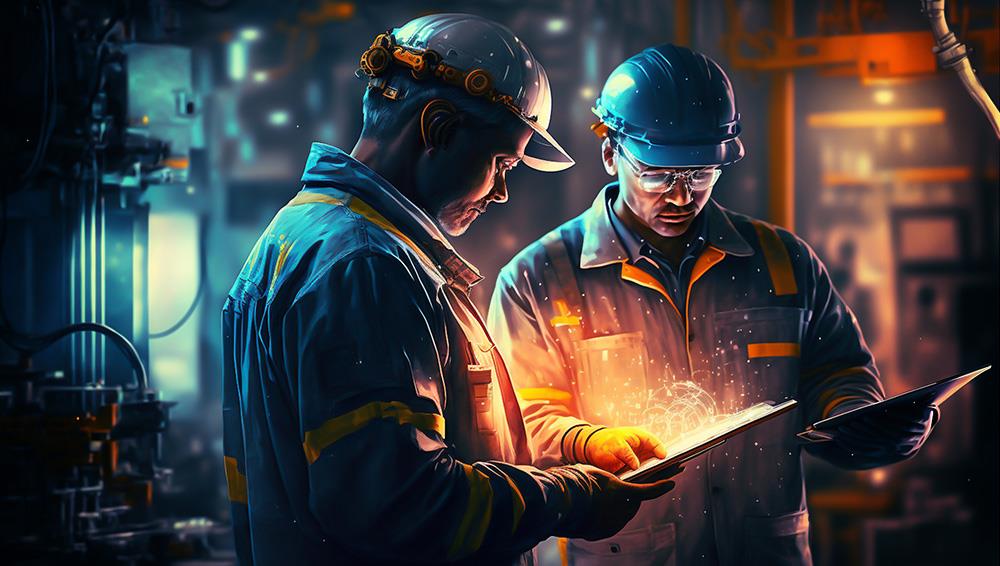
What if unplanned downtime could be stopped altogether? Plant operators and engineers might actually fall off their chairs! Why? Because unplanned downtime causes significant production losses, reduces profits, and causes frustration and headaches for all involved.
Unfortunately, time-based maintenance strategies don’t work in every scenario, as not all equipment failures can be associated with age. It has been estimated that 82% of failures exhibit random patterns, and it’s these random patterns that are hard to predict and prevent.
This is where Predictive Maintenance (PdM) comes into the picture. Predictive Maintenance that uses machine learning (ML) isn’t limited to only looking at age-related patterns or predefined threshold limits. Predictive Maintenance with machine learning detects anomalies and predicts failures using a risk and/or criticality approach.
Machine learning, which is a subset of artificial intelligence (AI), continuously learns and studies patterns in data. When used for Predictive Maintenance, it identifies deviations early and determines if they will lead to a future fault or incident. If a failure is predicted, maintenance teams are alerted and can schedule and plan maintenance work at a time that is convenient, avoiding unplanned downtime.
Predictive Maintenance goes a step beyond traditional maintenance practices, such as preventive and reactive maintenance. Preventive maintenance involves scheduling maintenance work on a regular basis, regardless of equipment condition. Reactive maintenance focuses on fixing equipment after a failure occurs. Both approaches can be costly and time-consuming. PdM, on the other hand, is designed to optimize maintenance efforts by focusing on the specific needs of each piece of equipment.
Predictive Maintenance, particularly when combined with machine learning, can be used on a wide range of equipment and is especially useful for rotating equipment which continually produces data with its pumps, turbine generators, gas compressors, industrial fans, and rotary kilns.
Unlike other predictive maintenance methods, which analyze data from a single piece of equipment or isolated process, PdM methods that utilize machine learning models analyze data from the entire facility.
Applying machine learning across a whole facility’s operational data can identify failures caused by seemingly unconnected processes.
Predictive Maintenance involves several steps, including data collection, analysis, and action. Here's a step-by-step overview of the process:
1. Data Collection:
The first step is to collect historic data and real-time data from sensors and other sources such as Distributed Control Systems (DCS), Programmable Logic Controller (PLC), or Supervisory Control and Data Acquisition (SCADA). This data can include information on equipment usage, temperature, vibration, and more. The data is then stored in an enterprise data warehouse or process data historian for analysis.
2. ML Modelling:
Next, machine learning models are trained, and the data is analyzed. The models can be trained on historic failures and built to detect patterns in the data that indicate potential equipment failures. For example, if a machine's vibration level is increasing over time, this could be a sign of an impending failure.
3. Equipment Diagnostics:
ML models can provide contributing factors and root cause analysis to assist with decision-making. Once potential equipment failures are detected, maintenance teams can use diagnostic tools to confirm the root cause of the problem. This can involve taking the equipment apart to inspect individual components or using non-destructive testing techniques.
4. Maintenance Planning:
Based on the diagnostic results, maintenance teams can plan and schedule maintenance work. This can include repairing or replacing damaged components, performing cleaning and lubrication tasks, or adjusting equipment settings.
5. Continuous Monitoring:
PdM is an ongoing process that requires continuous monitoring of equipment performance. ML models can run continuously, learning as operational changes are made, and monitoring and predicting future outcomes. Maintenance teams can use these insights to identify potential problems early and take action to prevent them from becoming serious issues.
Here are some examples of companies that have successfully used ML PdM to avoid unplanned downtime and increase equipment reliability:
Gas Leak Avoidance: A large oil and gas company used ML PdM to prevent a potential loss of primary containment (LOPC) event, which could have resulted in a major environmental incident. The models detected that the issue was being caused by a Gas Well, a separate process. The company was able to intervene quickly and take action to prevent a platform shutdown and an environmental disaster.
Ventilation Fan: A mining company was alerted to a problem with its ventilation fan, which was showing moderate to severe degradation in its outlet pressure. With this prediction, the engineering team was able to plan repairs and confirm the accurate root cause predicted by the ML models. The planned activity resulted in minimal downtime, and the avoidance of a $700,000 cost that would have been incurred had the fault not been caught.

Compressor Reliability: A oil and gas company had a recurring compressor reliability problem which resulted in unplanned downtime and significant costs. ML PdM was used to verify the conclusions of the reliability engineers and identify any additional factors. Using the insights provided, the company was able to extend the uptime of the gas compressor, to the value of $21.7 million within four months.
Predictive Maintenance with machine learning offers a solution to the random patterns of equipment failure that traditional maintenance strategies can't address. By continuously learning and analyzing patterns in data, machine learning models can detect anomalies and predict potential failures, allowing maintenance teams to schedule and plan maintenance work before unplanned downtime occurs.
PdM is an ongoing process that requires continuous monitoring of equipment performance and can be applied to a wide range of equipment. Companies that have successfully implemented PdM have been able to avoid environmental incidents, save costs, and increase equipment reliability. Overall, PdM with ML is a game-changer for plant operators and engineers in preventing unplanned downtime and improving profitability.
VROC CEO and Co-Founder